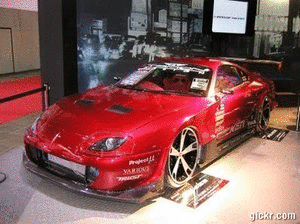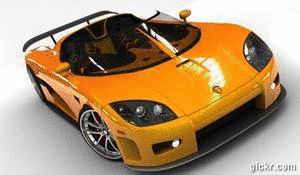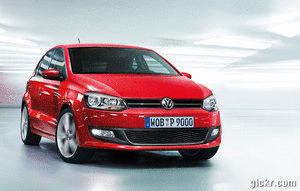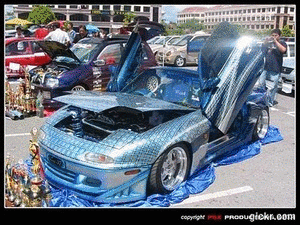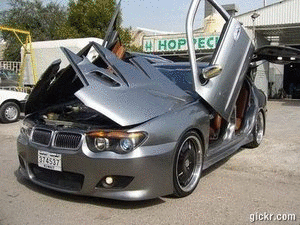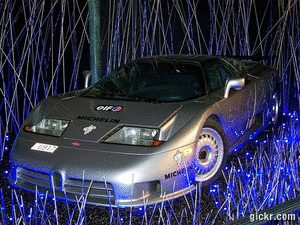What is the difference?
A rebuilt: replacement part, engine, transmission or differential means the unit has been disassembled and the "wear" items have been replaced such as bearings, brushes or guides etc. A rebuilt part will sometimes have individually painted parts. A refurbished unit is basically cleaned, painted and then resold. Obviously you are better off with the rebuilt unit than refurbished, some repair facilities will try to pass the refurbished unit off as a rebuilt unit so be sure you are getting what you ask for. If you are unsure of the integrity of the repair shop ask to see the part or unit before it is installed. Most dealerships and high end repair shops will only install new parts. New parts are optimum for best performance and longevity, rebuilt is the next best thing. You should only agree to a refurbished replacement part as a last resort.
|
|
|---|
Don't be fooled by the "low ball bid"
Some repair shops and dealers practice the low ball bid method of business to get you in the door this is how it works. Let's say you call in for a radiator replacement and you get a low bid, it sounds good but what is really happening on the other end of the phone is the service writer is planning on hitting you with job add-on's. EXAMPLE: The phone is ringing... Mrs. Johnson... I have bad news, your cooling system needs to be flushed, the thermostat is shot and your water pump is leaking. I'm sorry your car is already in pieces so I can't put it back together. The conversion goes on to include more problems not relevant to the issue you wanted fixed and you know the rest. You can see the cheapest estimate is not always the best way to go. To safeguard yourself get several estimates for the same repair, if one is much lower there might be something wrong. Most garages know what it takes to stay in business and stay competitive. For the most part you are safer taking it to the middle to upper end repair shop.
Flat tire on freeway
A flat tire on the freeway or any other busy highway can be very dangerous. There are mainly two kinds of flat tires, either the tire is very low on air or the tire is already flat and beginning to fall apart. In the first condition (tire very low on air) you have a chance to get off the freeway to a safe place where you can change the tire or wait for service. In the second case (flat and falling apart) it is best not to worry about saving the tire, your main objective is to get to the freeway off-ramp or to a safe place where you can change the tire or wait for service. The car will have more rolling resistance but it will continue moving on the flat tire, proceed very slowly and use caution. When pulling off the road to a safe place make sure your car is as far off the road and away from traffic as possible. Most of the time when a tire is run very low on air the inner layers of the tire will breakdown and render the tire useless anyway. If there isn't an off-ramp nearby or a safe place to stop, pull the car to the side of the road as far away from traffic as possible, when you can safely exit the car, walk as far away from traffic as possible to a more protected area. Don't get hung up on the idea that you need to save the tire. Far too many times people try to save a hundreds of ringgit tire and end up getting seriously injured or worse in the process.
Information Every Car Driver Should Know
Getting the most from your gas?
It is no secret gas prices are up and putting a big pinch on our pocket books. Car maintenance and driving habits significantly affect fuel economy. Here are a few tips to help you get the most for your buck. First, check the air pressure in your car's tires. Most vehicle tire pressure recommendations are located on a sticker in the driver's door jam or on the side wall of the tire. While tire and car manufacturers recommend a prescribed tire pressure, it has been shown that slightly more tire pressure is optimal for achieving higher fuel economy by reducing rolling resistance. Some hybrid cars are manufactured with tires that can hold up to 55 P.S.I. as compared with the usual 32 P.S.I. For safety and better gas mileage always keep your tires properly inflated. Next, analyze your driving habits. Do you take off quickly from a stop? Try easing into the throttle and allow the vehicle to accelerate slowly. Observe the traffic and signals in front of you. If a stop is imminent release the gas pedal and allow the car to coast the remainder of the distance before using the brakes. Proper maintenance of your car's engine is essential for optimum performance. If your engine is misfiring it will decrease mileage. If the engine oil and filter changes have been neglected it will cause additional friction inside the engine and hinder the performance and gas mileage. Finally, remove all un-necessary objects from the car, added weight can decease mileage also inspect your engine service records and perform a tune up or oil change as recommended. Following these gas saving tips can increase your mileage and save you money.
It is no secret gas prices are up and putting a big pinch on our pocket books. Car maintenance and driving habits significantly affect fuel economy. Here are a few tips to help you get the most for your buck. First, check the air pressure in your car's tires. Most vehicle tire pressure recommendations are located on a sticker in the driver's door jam or on the side wall of the tire. While tire and car manufacturers recommend a prescribed tire pressure, it has been shown that slightly more tire pressure is optimal for achieving higher fuel economy by reducing rolling resistance. Some hybrid cars are manufactured with tires that can hold up to 55 P.S.I. as compared with the usual 32 P.S.I. For safety and better gas mileage always keep your tires properly inflated. Next, analyze your driving habits. Do you take off quickly from a stop? Try easing into the throttle and allow the vehicle to accelerate slowly. Observe the traffic and signals in front of you. If a stop is imminent release the gas pedal and allow the car to coast the remainder of the distance before using the brakes. Proper maintenance of your car's engine is essential for optimum performance. If your engine is misfiring it will decrease mileage. If the engine oil and filter changes have been neglected it will cause additional friction inside the engine and hinder the performance and gas mileage. Finally, remove all un-necessary objects from the car, added weight can decease mileage also inspect your engine service records and perform a tune up or oil change as recommended. Following these gas saving tips can increase your mileage and save you money.
Engine Vibration at Idle
The engine in your car is designed to run balanced to minimize vibration to the passengers. Vibration is the most noticeable when the engine is at an idle. Several components are designed to help minimize engine vibration. I have listed some of the most common problems and repairs below.
Troubleshooting Procedure
- Engine mounts are used to minimize engine vibration by isolating the engine from the car frame. These mounts are constructed by using rubber vulcanized between to metal plates with threaded studs that bolt to the engine and the frame of the car. When motor mounts become worn they allow the engine the contact the frame causing a noticeable vibration. Inspect the engine mounts for integrity, look for any oil, cracks or separation of the mount. Remove the failed engine mount and replace if needed. For exact instructions how to replace the engine mounts in your vehicle consult an auto repair manual.

New Engine Mount (appearance will vary)
- A balance shaft belt is used inside some designs of engines to counter act vibration created by the natural engine operation. Many balance shafts are operated by a timing belt
that can break or become out of correlation with the engine either by a worn timing belt or misalignment when replaced. To inspect for this problem, remove the timing belt cover and inspect timing belt marks for proper alignment. All engines are different, consult a car repair manual for exact belt alignment specifications.
- An engine depends on an equal compression reading in each cylinder. If poor compression exits in one or more cylinders it can cause a rough idle condition. To check for this condition perform an engine compression test to compare readings. Once a low cylinder has been detected addition internal engine inspection is required.
Troubleshooting Procedure
- Engine mounts are used to minimize engine vibration by isolating the engine from the car frame. These mounts are constructed by using rubber vulcanized between to metal plates with threaded studs that bolt to the engine and the frame of the car. When motor mounts become worn they allow the engine the contact the frame causing a noticeable vibration. Inspect the engine mounts for integrity, look for any oil, cracks or separation of the mount. Remove the failed engine mount and replace if needed. For exact instructions how to replace the engine mounts in your vehicle consult an auto repair manual.

New Engine Mount (appearance will vary)
- A balance shaft belt is used inside some designs of engines to counter act vibration created by the natural engine operation. Many balance shafts are operated by a timing belt
that can break or become out of correlation with the engine either by a worn timing belt or misalignment when replaced. To inspect for this problem, remove the timing belt cover and inspect timing belt marks for proper alignment. All engines are different, consult a car repair manual for exact belt alignment specifications.
- An engine depends on an equal compression reading in each cylinder. If poor compression exits in one or more cylinders it can cause a rough idle condition. To check for this condition perform an engine compression test to compare readings. Once a low cylinder has been detected addition internal engine inspection is required.
Wastegates - Facts and Fiction

With so many contradicting opinions and recommendations, it’s a little wonder choosing the right Wastegate for your application can be a confusing.
We try to disspell some myths and shed some light on the most common misconceptions regarding wastegates.
TRUE OR FALSE
*The more powerful the engine, the bigger the wastegate you need.*
False. This is one of the more popular misconceptions. A wastegate is possibly the only component in your whole engine package that can actually be made smaller as you increase your boost/horsepower output. Use this simple guide:
Big Turbo/Low Boost = Bigger Wastegate
Big Turbo/High Boost = Smaller Wastegate
Small Turbo/High Boost = Smaller Wastegate
Small Turbo/Low Boost = Bigger Wastegate
Wastegates don’t operate in high temperatures
False. Contrary to the popular belief, external wastegates are usually mounted at the hottest part of the exhaust. It’s the place where all the exhaust gases meet, creating extra heat. This, combined with the late combustion of unburnt fuel (due to rich mixtures, retarded timing and high octane fuels) significantly raises the exhaust temperature.
Larger wastegate valve diameter = better flow
True – sort of. While the valve diameter is without a doubt an important part of the flow rate, equally important, but often misunderstood, is the importance of the flow path. When comparing wastegates with similar valve size, it is important to have a balanced body/valve/spring combination that is designed to work together to allow for maximum boost control. All Turbosmart wastegates are designed with this in mind.
Subscribe to:
Posts (Atom)
